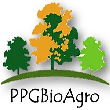Banca de DEFESA: IAGO MANUELSON DOS SANTOS LUZ
Uma banca de DEFESA de MESTRADO foi cadastrada pelo programa.DISCENTE : IAGO MANUELSON DOS SANTOS LUZ
DATA : 26/02/2021
HORA: 08:00
LOCAL: Virtual
TÍTULO:
Conflicts with white leap peccary (Tayassu pecari) and Farmers in the South of the Brazilian Amazon
PALAVRAS-CHAVES:
Forest Fragments; Agricultural Areas; Prague species; Human-wildlife conflict.
PÁGINAS: 47
GRANDE ÁREA: Ciências Biológicas
ÁREA: Zoologia
SUBÁREA: Zoologia Aplicada
ESPECIALIDADE: Conservação das Espécies Animais
RESUMO:
In recent years in Brazil, invasive species in cultivation areas have been raising concern among farmers due to damage and losses in production. A study carried out in the Parque Nacional das Emas, for example, shows a daily consumption of 1.9 kg of corn by the white leap peccaries (WLP) (Tayassu pecari). However, these invasions are driven by deforestation that causes forest fragmentation, loss of habitat and reduced availability of resources, forcing fauna to explore agro-ecosystems in search of food. An example of this is the situation of the WLP. While they have disappeared from much of the country, they are still abundant and live in conflict with corn farmers in the state of Mato Grosso. Thus, this species, resilient to the impacts of forest fragmentation, is now seen as a pest specie by farmers. Due to this conflicting relationship, this work was divided into two chapters and had two main objectives. The first estimated the economic impacts caused by the WLP on corn production on a single property in the south of the Brazilian Amazon. The second assessed the dispersed functional connectivity of the WLP in an environment with an agricultural matrix, to use as a predictive model of areas to be invaded and aiming at guiding producers regarding this possibility. For the first objective, we used a property in the municipality of Alta Floresta, with 1,100 hectares of corn crops. In this property we randomized 50 collection points, all around the crop, represented by one hectare each, composed of six treatments (distances from the edge of the forest fragment), divided into five repetitions of 10 linear meters of corn, where the whole and damaged corn stalks were counted. We calculated the percentage of damaged corn stalks at each point, extracting an average loss for the points analyzed, being extrapolated to the entire crop. For the second, we used data on the presence and absence of white-lipped peccaries, acquired through visits to properties that grew corn in the 2018/19 crop year in Alta Floresta, Carlinda and Paranaíta in the state of Mato Grosso. With the ArcGis Software and orbital scenes from the CBERS-04A satellite (China-Brazil Earth-Resources Satellite), we identify forest fragments and crops to quantify connection rates through the Conefor Sensinode 2.6 plugin, through the integral connectivity index (IIC). We found 1.25% of damaged plants throughout the property, representing a loss of R $ 34,344.75 for the owner. Crops were invaded at a rate of up to 300 meters in connection with forest fragments. Even low damage rates are not tolerated by farmers. This intolerance and persecution promoted by farmers may compromise the survival of the WLP in the agricultural frontier areas in the Amazon. One of the solutions to avoid conflicts would be for crops to be cultivated at least 300 meters away from the nearest forest fragment.
MEMBROS DA BANCA:
Presidente - 131948001 - MENDELSON GUERREIRO DE LIMA
Interno - 265126001 - CARLOS ANTONIO DA SILVA JUNIOR
Externo ao Programa - 71440008 - MANOEL DOS SANTOS FILHO
Externo à Instituição - EVERTON BERNARDO PEREIRA DE MIRANDA - UKZN



